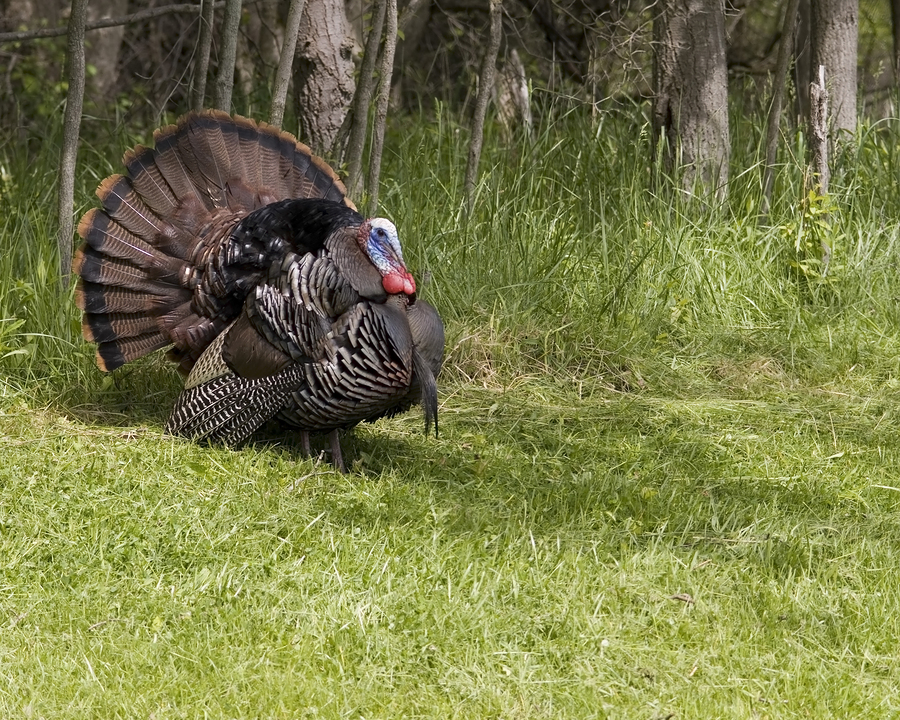Turkeys Should be Active for Opener 2
When we interviewed Jerrod Gibbons from Okanogan Valley Guide Service on March 20th on The Outdoor Line about the upcoming turkey season he was looking to the high ground to find birds after six weeks of unusually mild weather here in Washington had prematurely pushed the birds higher. Just as soon as he hung up the phone with us, however, Mother Nature sent the gobblers high-tailing it back down to their normal winter habitat with three weeks of brisk weather breathing down their necks, and that's where they've been ever since.
"The cold snap we just went thru really put the birds back in their normal routine and with temperatures in the 70's forecast for the next few days in Eastern Washington the birds should be really active for the opener," said an excited Gibbons about the April 15th opener. 
Meriams dominate the north east part of Eastern Washington and Rio Grandes can be found in the creek bottoms and foothills along the Blue Mountains near Walla Walla. Gibbons mentioned that there's not much difference in hunting methods between the two sub-species.
Ironically the only place to find the Eastern variety is in Western Washington, as they fair much better on the rainy side of the hill than the other subspecies.
A decoy technique Gibbons likes to use is to situate a jake and a breeding hen decoy close together and sometimes he'll even set the birds so it looks like they're mating. Of course I got a chuckle out of that scenario, but Jerrod was dead serious about it's effectiveness. "When a big tom sees a jake with one of his hens it's all you can do to keep them away," noted Gibbons of the illicit decoy arrangement.
He also recommends finding a spring or a creek bottom bordered by sparse timber as a prime area to find birds. Scout these areas for sign in the days before the opener and leave the calls in the truck, as there's no need to educate these smart birds before the season opens.
Once birds are located keep a distance and "put them to bed" the night before. The birds will usually fly downhill from their roost first thing in the morning, so it's important to set up near where you think the birds are going to fly well before the sun peaks over the hill in the morning.
After a likely landing zone is located and the dekes are set concealment is the key and he likes to use either a small blind or full-body camoflouge that matches the surrounding folage. Turkeys have excellent eyesight and once they're locked into the decoys it's ultra important to keep still, as any amount of movement no matter how small, can put the birds off.
The first turkey season in Washington took place in 1965 and lasted for one and a half days. Nowadays, hunters enjoy a spring season that lasts from April 15th thru May 31st and as many as 5,300 wild turkeys are harvested by 15,000 plus hunters in Washington annually.
The North East corner of Washington state is by far the most productive area for wild turkeys with over 3,000 harvested annually since 2002 and the Southeast region, Klickitat County, and Okanogan County make up the bulk of the remainder of the harvest.
For more information on Washington turkey harvest statistics click HERE.
Okanogan Valley Guide Service puts their hunters on approximately 10,000 acres of private ground in both Okanogan and Walla Walla Counties, targetting both the Meriam and Rio Grande sub-species. To book a hunt with Okanogan Valley Guide Service call 509-429-1714 or log onto their website at www.okanoganvalleyguideservice.com.


Mentioned that in there Swanny...though the only place I've ever seen an Eastern over here is in someones front yard in downtown LaConner : )
This is a great piece of lit, also would like to add that here on the Westside there are eastern birds as well.